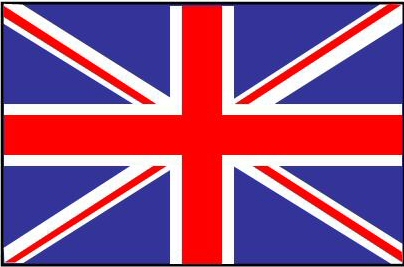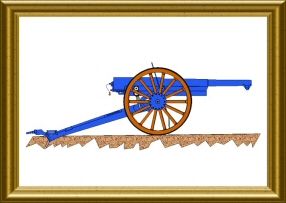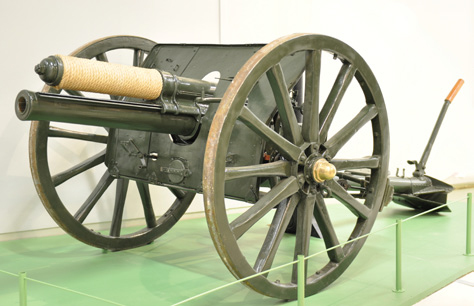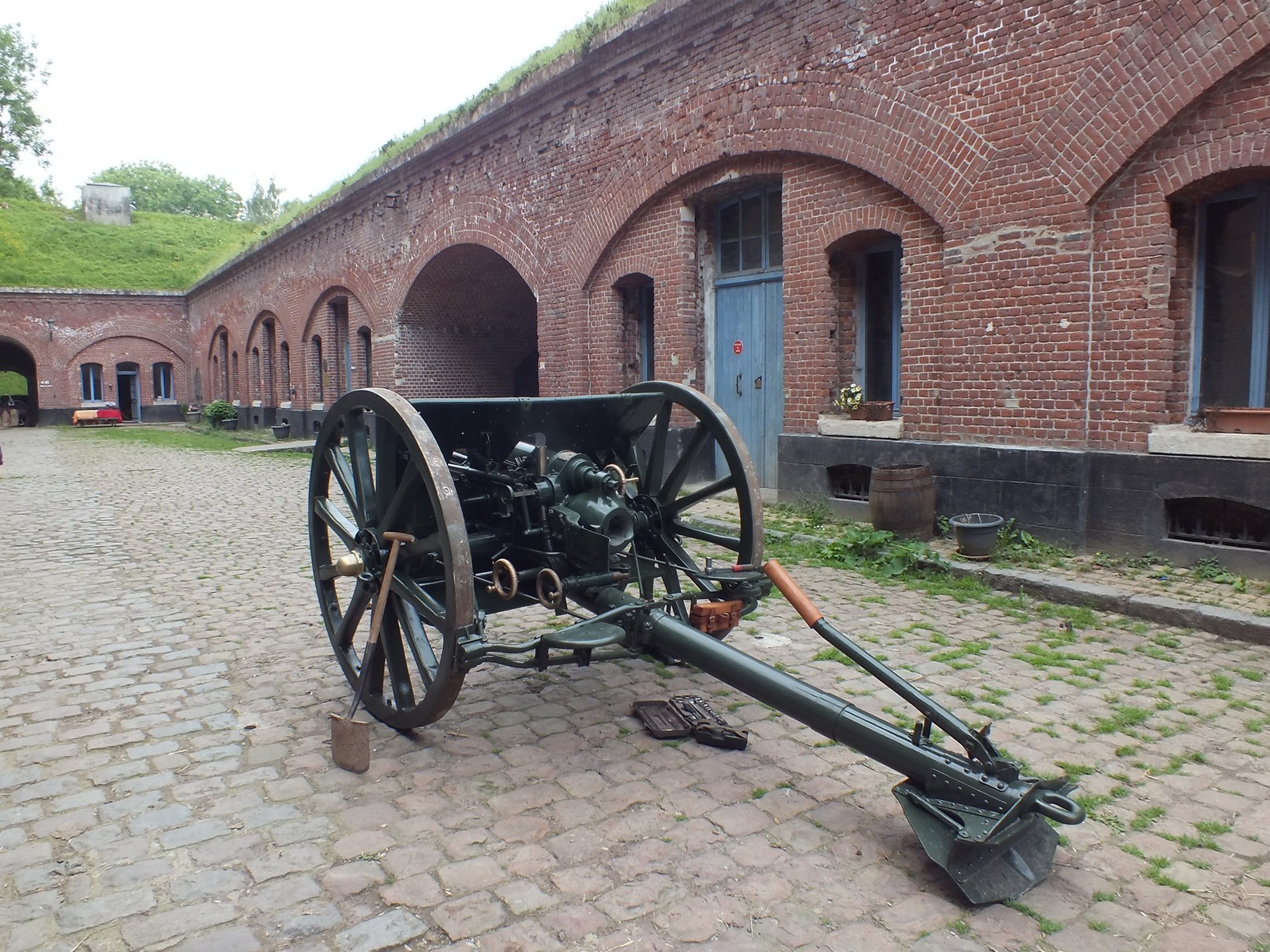|
|
|
|
|
|
|
 Great Britain
|
QF 13-Pdr field gun Mk. I, Mk II & Mk III |
 Light artillery
|
|
|
Contributor :
|
Location :
France
Seclin (59)
Fort de Seclin
Coordinates :
Lat : 50.55630 / Long : 3.00380
|
General comments on this surviving gun :
Identical items in the same location :
1
Items covered by this file :
1
|
|

|

|

|
|
Rear view. Notice the tubular trail that was restricting the elevation range to a poor 16 degrees.
|
The gun when in Pozière's famous Tommy's Bar
|
|
|
Historic and technical information
|
|
Denomination :
QF 13-Pdr field gun
|
Origin :
 (
Royal Arsenal)
(
Royal Arsenal)
 (
Vickers )
(
Vickers )
 (
Armstrong )
(
Armstrong )
|
|
Historic context :
United Kingdom was one of the 'lucky' nations that could participate to a war just before WW1, and acquire experience to improve its equipment. Especially, the second Boers war (1899-1902) showed the British troops, equipped with obsolete 'BL' - Breech Loading fieldguns, often defeated by the Boers that received the support of the German Emperor and were equipped with modern Krupp guns equivalent to the 77 FK 96 n/A.
In 1900 the British Army ordered 108 3 inches fieldguns to Rheinmetall (named afterwards QF 15-pounder field gun The Ehrhardt). The acquired experience using these guns inspired the redaction of a technical specification for the design of quick-firing field guns ('QF' = 'Quick Firing'). The best solutions were porposed by Vickers, Armstrong and the Royal Ordnance Factory and were combined to give birth to the famous 13 pdr and 18 pdr fieldguns, ordered in 1904.
The 'QF 13-pounder field gun', was made for the Royal Horse Artillery. More precise, manoeuvrable and light than the 18-Pdr, it was very close to be retained as the only fieldgun in service before WW1. But the first 1914 fights quickly demonstrated its lack of firing rate (caused by a insufficient stability given by the recuperator), of range (lthe vertical elevation was blocked by a cylindrical trail), and of power ('only' 13 pounders shells), and eventually it was the 18-pounder that became the standard field gun of the British Army. The 13-pounder was often used on the 'secondary' fronts, in Middle-East or in Africa.
406 guns were built in a total, of which only 150 during the WW1 (100 of them being built in the USA). 3 different verions were built : Mk I, Mk II and Mk III (anti-aircraft).
|
Technical data :
- Complete description : Ordnance Quick Fire 13 pounder field gun Mark I, Mark II and Mark III
- Design year : 1904
- Calibre : 76.20 mm (3 in)
- Weight in firing position : 998 kg
- Weight for transportation :
- Tube length in calibres : 24.40
- Grooves : 0
- Projectile weight : 5.9 kg
- Initial speed : 518 m/s
- Fire rate :
- Range : 7600 m
- Elevation range : -5 to +16 degrees
- Direction range : 8 degrees total range
|
Sources
|
-
Allied Artillery of World War One Ian V. Hogg Crowood 1998
-
British Artillery 1914-19, Field Army Artillery Dale Clarke Osprey Publishing 2004
|
|